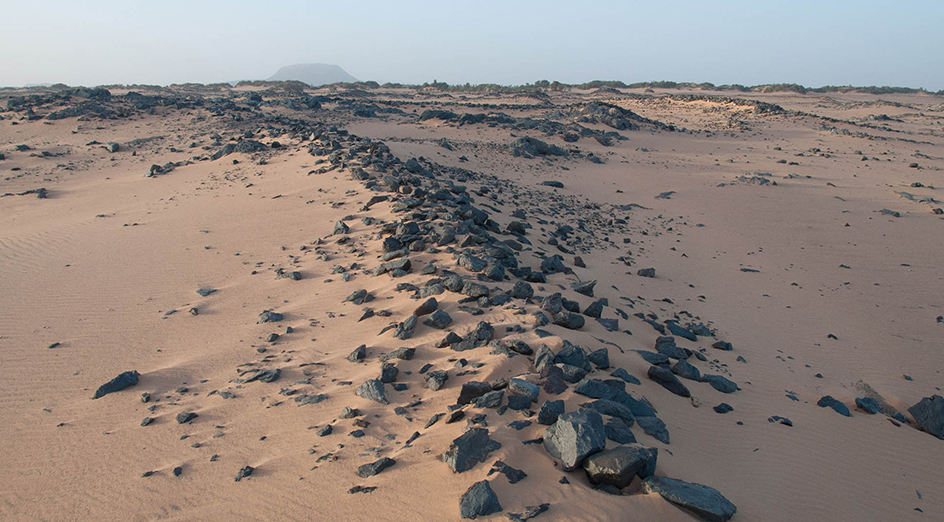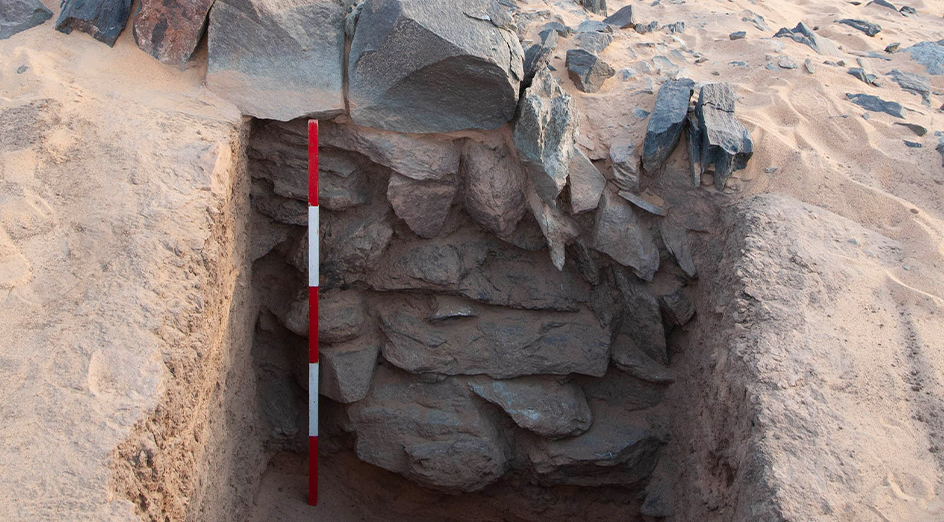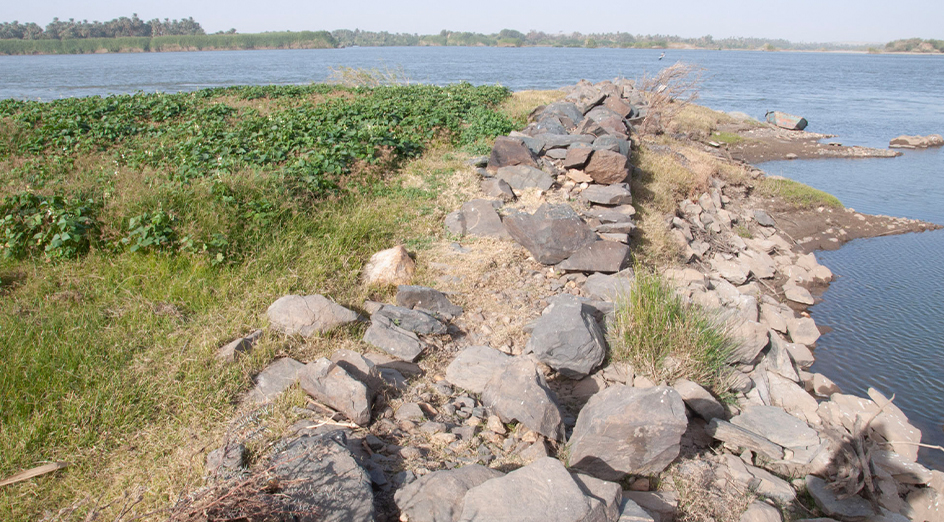An international team of researchers says a vast network of stone walls along the River Nile in Egypt and Sudan has revealed an ancient form of hydraulic engineering in the Nile Valley and shed light on connections between ancient Nubia and Egypt.
“This incredibly long-lived hydraulic technology played a crucial role in enabling communities to grow food and thrive in the challenging landscapes of Nubia for over three thousand years.”
Dr Matthew Dalton, UWA School of Humanities
The Nile ‘river groynes’ predate the oldest previously known examples in the world, such as those on the Yellow River in China, by more than 2500 years.
The findings of the study, conducted as part of the British Museum’s Amara West Research Project in collaboration with the Sudanese National Corporation for Antiquities and Museums, have been published in the journal Geoarchaeology.
Lead author Dr Matthew Dalton, from The University of Western Australia’s School of Humanities, said the team mapped and recorded the walls across more than 1100km of the Nile Valley to determine their construction timeline, who built them and why.

Image: Walls located in a channel of the Nile in northern Sudan that permanently dried due to climate change around 1000 BCE.
“Using satellite imagery, drone and ground surveys, as well as historical sources, we located nearly 1300 river groynes between the 1st Cataract in southern Egypt and the 4th Cataract in Sudan,” he said.
Hundreds of the groynes, which are now submerged beneath the Aswan High Dam reservoir, were found in 19th century travellers’ diaries, a 200-year-old map and archives of aerial photographs, including some taken by the Royal Air Force in 1934.
Many were found within ancient Nile channels that had dried due to past climate change, with researchers using radiocarbon and luminescence dating techniques to establish some were built over 3,000 years ago.

Image: Excavations of a wall in a now-dry channel, showing thick accumulations of Nile silt.
“The walls trapped fertile silts during the Niles annual inundation, and crops could be grown on the reclaimed agricultural land without artificial irrigation,” Dr Dalton said.
“Radiometric dating suggests that this form of landscape engineering was first undertaken by the region’s indigenous Nubian communities, as well as the inhabitants of towns established later by pharaohs of the New Kingdom Egyptian State.
“From speaking with farmers in Sudanese Nubia, we also learnt that river groynes continued to be built as recently as the 1970s, and the land formed by some walls is still cultivated today.
“This incredibly long-lived hydraulic technology played a crucial role in enabling communities to grow food and thrive in the challenging landscapes of Nubia for over 3000 years.”

Image: A 20th century river groyne in northern Sudan, with crops grown on adjacent reclaimed land.
The team also identified much larger stone walls within the Nile, some up to five metres thick and 200 metres long – barrages that would have directed river flow and aided boat navigation through treacherous Nile rapids.
“These monumental river groynes helped connect the people of ancient Egypt and Nubia by facilitating long-distance movement of resources, armies, people and ideas along the Nile,” Dr Dalton said.







